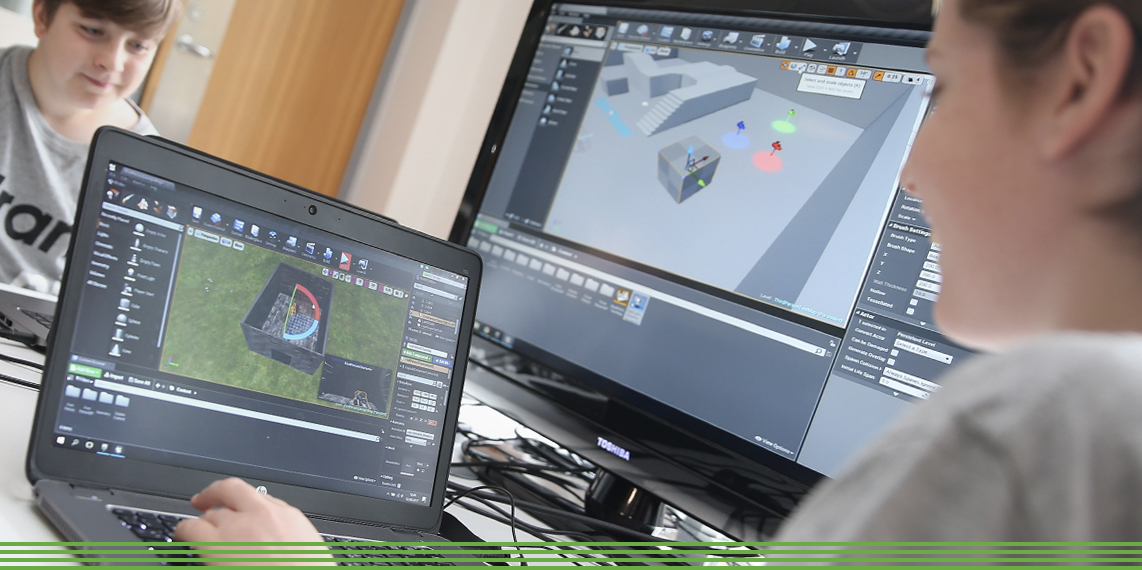Crafting Virtual Realities: A Comprehensive Guide on How to Make Computer Games

Introduction:
The world of computer games is a captivating realm where creativity meets technology, offering endless possibilities for those eager to create their own interactive experiences. This comprehensive guide is your roadmap to understanding the process of making computer games from conceptualization to implementation. Whether you’re an aspiring game developer, a hobbyist, or someone curious about the game development journey, this guide will provide insights, tools, and step-by-step instructions to help you embark on this exciting venture.
Chapter 1: Understanding the Basics of Game Development:
Before delving into the creation process, it’s crucial to comprehend the fundamentals of game development. This chapter will provide an overview of key concepts such as game engines, programming languages, design principles, and the various roles within a game development team. Understanding these basics lays the groundwork for a successful game development journey.
Chapter 2: Defining Your Game Concept and Genre:
The first step in making a computer game is defining your vision. This chapter will guide you through the process of brainstorming and refining your game concept, including considerations for genre, target audience, and unique selling points. Defining a clear vision for your game sets the stage for effective development.
Chapter 3: Choosing the Right Game Engine:
Selecting a game engine is a pivotal decision in the game development process. This chapter will explore popular game engines such as Unity, Unreal Engine, and Godot, providing insights into their strengths, features, and ease of use. Considerations for choosing the right engine based on your game’s requirements will be discussed.
Chapter 4: Learning the Basics of Programming:
While not every game developer needs to be a coding expert, understanding the basics of programming is essential. This chapter will introduce you to programming languages commonly used in game development, such as C#, Python, and JavaScript. Resources and tutorials for beginners will be highlighted.
Chapter 5: Creating Game Art and Design:
Game art and design contribute to the visual identity and player experience. This chapter will cover the basics of creating 2D and 3D game art, including character design, environment creation, and animation. Tools like Photoshop, Blender, and Aseprite will be introduced for aspiring game artists.
Chapter 6: Implementing Game Mechanics:
Game mechanics define how players interact with your game. This chapter will delve into the process of implementing basic game mechanics, covering concepts like player movement, collision detection, and user interfaces. Practical examples and coding snippets will be provided for clarity.
Chapter 7: Building Levels and Environments:
Crafting engaging levels and environments is a crucial aspect of game development. This chapter will guide you through the process of designing and building levels using your chosen game engine. Techniques for creating immersive environments and structuring gameplay experiences will be discussed.
Chapter 8: Integrating Audio and Music:
Audio enhances the immersive quality of a game. This chapter will explore the basics of integrating sound effects and music into your game. Tools for creating and editing audio, as well as considerations for implementing dynamic audio experiences, will be covered.
Chapter 9: Testing and Debugging Your Game:
Testing is an iterative and essential part of game development. This chapter will introduce you to the principles of game testing, including playtesting, debugging, and user feedback. Strategies for identifying and resolving common issues during the testing phase will be discussed.
Chapter 10: Optimizing Performance:
Optimizing your game’s performance ensures a smooth and enjoyable player experience. This chapter will provide tips and techniques for optimizing graphics, code, and other aspects of your game to achieve optimal frame rates and responsiveness.
Chapter 11: Adding Game Polish and Details:
Polishing your game involves adding the finishing touches that elevate it from good to great. This chapter will explore the importance of attention to detail, refining animations, fine-tuning gameplay mechanics, and incorporating visual and audio effects to create a polished and professional game.
Chapter 12: Publishing and Marketing Your Game:
Bringing your game to the world involves navigating the realms of publishing and marketing. This chapter will guide you through the process of preparing your game for release, creating marketing materials, and choosing the right platforms for distribution. Tips for building a community and leveraging social media will be discussed.
Chapter 13: Continuing Education and Skill Development:
Game development is a continuously evolving field, and staying current is essential. This chapter will provide guidance on ongoing education and skill development, including online courses, workshops, and communities where you can connect with fellow game developers.
Chapter 14: Exploring Advanced Game Development Topics:
For those looking to delve deeper into game development, this chapter will introduce advanced topics such as artificial intelligence, virtual reality, and multiplayer game development. Resources and avenues for exploring these advanced concepts will be highlighted.
Chapter 15: Troubleshooting and Overcoming Challenges:
Throughout the game development process, you may encounter challenges and roadblocks. This chapter will offer troubleshooting tips and strategies for overcoming common obstacles, whether they relate to coding issues, design dilemmas, or unexpected setbacks.
Chapter 16: Celebrating Success and Learning from Failures:
The culmination of your efforts is a game that you can proudly share with the world. This chapter will discuss the importance of celebrating successes, learning from failures, and using each project as a stepping stone for growth in your game development journey.
Conclusion:
Embarking on the journey to make computer games is a thrilling endeavor that combines creativity, technical skills, and a passion for interactive experiences. This comprehensive guide has equipped you with the knowledge and tools to navigate the game development process, from concept to release. Whether you’re a beginner or aspiring to refine your skills, the world of game development is open to exploration, innovation, and the creation of virtual worlds that captivate players around the globe.






